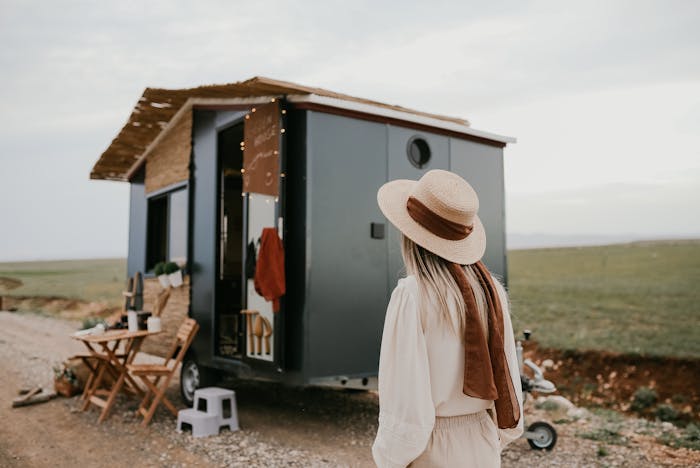The growing popularity of Accessory Dwelling Units (ADUs) and tiny homes reflects a larger shift toward sustainable living, affordability, and efficient land use. Whether you’re building a backyard cottage, a rental unit, or a home for a loved one, choosing the right team of tiny house builders is key to turning your vision into reality. This decision impacts everything from design execution to permitting and long-term livability. We will explore how to evaluate and select the right builders who align with your goals, values, and expectations without compromising quality or ethics.
Key Factors for Choosing the Right Tiny House Builders for Your ADU Project
1. Review the Builder’s Track Record With Similar Projects
When evaluating builders, it’s not just about how long they’ve been in the industry—it’s about what they’ve built and how those projects have stood the test of time. A credible tiny house builders will have completed ADUs similar in scope, layout, or design to what you’re considering. Ask to see a portfolio of past builds, and if possible, request to tour a finished unit. Inquire about each project’s scale, any challenges encountered, and how the team resolved them.
Also consider how the builders adapted their designs to meet local zoning codes and space limitations. These conversations provide insight into their problem-solving abilities and understanding of local compliance issues. Don’t rely solely on pictures; ask questions about the functionality of space, materials used, and user feedback post-completion. A track record of successful ADUs demonstrates that the team understands the unique dynamics of small-space construction and how to maximize comfort within tight parameters.
2. Assess Communication and Transparency During Initial Interactions
From your first email or phone call, the nature of communication offers subtle yet powerful indicators about what it will be like to work with a particular team. Builders who respond promptly, provide detailed answers, and explain their process in clear terms are showing respect for your time and investment. These early exchanges should also involve them asking you questions—not just about square footage or cost, but about your long-term goals, how the unit will be used, and any personal preferences you have for layout, finishes, or energy usage.
Builders who prioritize communication create smoother project timelines and reduce the likelihood of misunderstandings later on. Transparency also extends to cost breakdowns, scheduling expectations, and the roles of subcontractors. Consider it a red flag if a builder hesitates to clarify these details or deflects when asked about challenges in past projects. Open communication is essential for mutual trust; your peace of mind during construction depends on it.
3. Evaluate Their Understanding of Local Building Codes and Permits
Each city or municipality has specific requirements when it comes to ADU construction. A reliable team of builders will be well-versed in your local zoning ordinances, building codes, and permitting timelines. Ask whether they handle permitting as part of their services or if you’ll need to navigate that process independently. Builders familiar with your area can also offer insights into maximizing space legally, whether it’s building height restrictions, setbacks, or utility hook-up requirements. This knowledge is crucial for keeping your project on track and avoiding delays or rework caused by failed inspections or compliance issues.
Local experience can also inform design choices that pass muster with planning departments, which can streamline approvals. Additionally, ask how they stay current on code changes, particularly sustainability, energy efficiency, or accessibility. Their ability to integrate code compliance seamlessly into the design and construction process helps ensure a stress-free and legal build.
4. Look at Customization Flexibility and Design Collaboration
Tiny homes and ADUs are not one-size-fits-all structures. A strong building team should be willing to adapt their approach to accommodate your needs, whether building for aging in place, creating space for a home office, or meeting certain environmental standards. Ask if their team includes in-house designers or works with architects who can customize layouts. Review any design packages they offer, and ask if they’re open to using non-standard materials or fixtures if you already have something specific in mind.
The right builder will view your vision as a starting point rather than an obstacle. Collaboration means listening to your needs and incorporating practical solutions to maximize space, efficiency, and comfort. This could involve multi-use furniture, convertible layouts, or solar panel integration. Builders who encourage participation during the design phase typically produce more satisfying results because the final product reflects your lifestyle and intentions for the space.
Choosing a tiny house builder for your ADU project is more than signing a contract—it’s about establishing a partnership rooted in mutual understanding, shared goals, and clear expectations. With many factors to weigh, from design flexibility and code compliance to communication style and client feedback, taking the time to vet your options thoroughly can save you stress and additional costs in the long run. We’ve outlined the major elements to evaluate when selecting a team, each of which directly affects how your project progresses from concept to completion. By focusing on transparency, proven experience, and adaptability, you can confidently move forward with a team that brings your ADU vision to life with integrity and intention.


